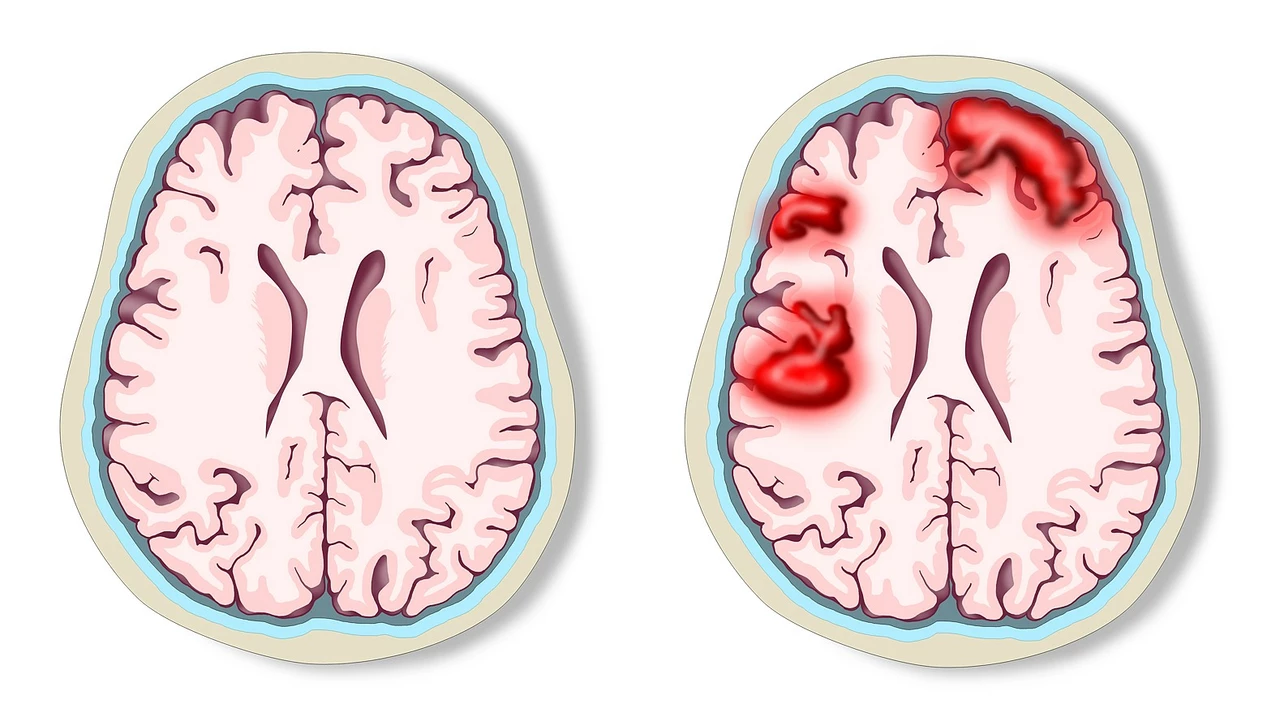Understanding Subarachnoid Hemorrhage
Before we delve into the treatment of subarachnoid hemorrhage, it's vital to understand what this condition is. A subarachnoid hemorrhage is a life-threatening type of stroke caused by bleeding into the space surrounding the brain. It can happen suddenly, often due to a ruptured aneurysm. Symptoms may include a sudden and severe headache, often described as the "worst headache" one has ever had, along with nausea, vomiting, and a stiff neck.
Why Nimodipine is Crucial in the Treatment of Subarachnoid Hemorrhage
One of the primary treatments for a subarachnoid hemorrhage is a drug called nimodipine. Nimodipine is a calcium channel blocker, which means it helps to relax and widen blood vessels. This allows more blood and oxygen to reach the damaged areas, helping to prevent further brain damage. Studies have shown that nimodipine can significantly improve outcomes in patients with subarachnoid hemorrhage, including reducing the risk of death and severe disability.
How Nimodipine is Administered
Now that we know why nimodipine is used, let's look at how it's administered. Nimodipine is typically taken orally, in capsule form. The dosage is usually tailored to each individual patient based on their specific condition and overall health. It's important to take nimodipine exactly as directed by a healthcare professional, as taking too much or too little can have serious consequences.
The Side Effects of Nimodipine
Like all medications, nimodipine can have side effects. These may include headache, dizziness, slow heart rate, nausea, and flushing. In rare cases, nimodipine can cause more serious side effects, such as severe low blood pressure, heart failure, or liver damage. It's crucial to discuss these potential side effects with a healthcare provider before starting nimodipine treatment.
Contraindications and Precautions
Nimodipine isn't suitable for everyone. It's contraindicated in people with certain conditions, such as severe liver disease or certain types of heart disease. It should also be used with caution in people with low blood pressure, slow heart rate, or other heart problems. It's essential to provide a complete medical history to a healthcare provider before starting nimodipine.
Interactions with other Medications
Nimodipine can interact with other medications, which can affect how it works or increase the risk of side effects. For example, it can interact with certain types of antidepressants, heart medications, and other types of blood pressure medications. It's important to tell a healthcare provider about all the medications a person is taking, including over-the-counter drugs and supplements, before starting nimodipine.
Research and Studies on Nimodipine
Many studies have been conducted on the use of nimodipine in the treatment of subarachnoid hemorrhage. These studies have consistently shown that nimodipine can improve outcomes in these patients. However, more research is needed to fully understand the best ways to use nimodipine, and to explore potential new uses for this medication.
Conclusion: The Importance of Nimodipine in Subarachnoid Hemorrhage Treatment
In conclusion, nimodipine plays a crucial role in the treatment of subarachnoid hemorrhage. It can help to reduce the risk of death and severe disability in patients with this condition. However, like all medications, it must be used wisely and under the guidance of a healthcare provider. It's hoped that ongoing research will continue to shed light on the best ways to use nimodipine in these patients.


Robert Andersen
July 22, 2023 AT 20:11Nimodipine’s whole deal is basically forcing blood vessels to chill out so the brain doesn’t get strangled by spasm. It’s not magic, but it’s one of those rare meds that actually does what the papers claim. I’ve seen patients wake up from near-dead states after this stuff kicked in. Crazy how such a simple calcium blocker can flip the script on brain survival.
Eric Donald
July 24, 2023 AT 16:45The clinical evidence for nimodipine is robust, particularly in randomized controlled trials showing a 30-40% reduction in delayed ischemic neurological deficits. However, adherence to the 60mg q4h oral regimen remains suboptimal in practice due to gastrointestinal intolerance and lack of standardized protocols across ICUs. The pharmacokinetics are also complicated by first-pass metabolism-hence the need for enteral administration despite poor bioavailability.
Brenda Flores
July 25, 2023 AT 12:54Thank you for this thoughtful and well-researched post. It's so important to raise awareness about nimodipine-not everyone realizes how vital it is in saving lives after aSAH. I work in neurorehabilitation, and I've seen families go from despair to hope because of this one little capsule. Please, if you or someone you love is facing this, don't skip the doses. It's not just medicine-it's a lifeline.
Jackie R
July 26, 2023 AT 19:25Anyone who takes this drug without a doctor’s order is an idiot. This isn’t vitamin C. You don’t just google it and pop pills because you read a blog. People die from this stuff if they mess with the dosage. Stop being reckless.
Josh Arce
July 27, 2023 AT 19:41Wait, so you're telling me a drug that blocks calcium makes blood vessels bigger? That's it? No fancy tech, no gene editing, just… calcium? Feels like we're treating the brain with a hammer and duct tape. Also, why isn't this in a pill you can buy at CVS? Sounds like Big Pharma's keeping it locked up.